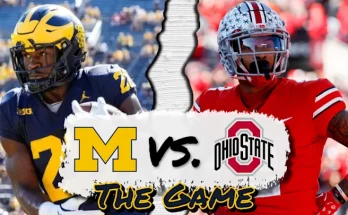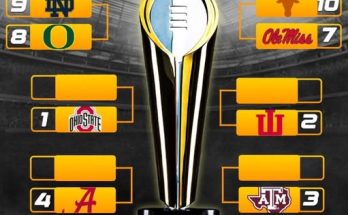When Steve Sarkisian took the reins of the Texas Longhorns football program, he didn’t just accept a coaching job; he embarked on a high-stakes journey that could redefine the very essence of college football. The stakes? Nothing less than the entire future of Texas football, and indeed, his personal fortune is on the line. Sarkisian’s commitment to transforming the Longhorns into a perennial powerhouse goes beyond the traditional coaching call sheet or recruiting pitches — it’s a daring, multi-million dollar gamble to build a college football empire unlike anything the NCAA has ever seen.
Steve Sarkisian’s decision to go “all-in” is a testament to his belief in the potential of Texas football, a program with a storied history and immense expectations but one that has struggled in recent years to reclaim its spot at the summit of college football. For Sarkisian, it wasn’t enough to be the man calling plays on Saturdays or to simply inherit the program’s legacy. He set out to craft a future where Texas football doesn’t just compete — it dominates, on and off the field. What’s truly remarkable about Sarkisian’s gamble is how deeply intertwined his own financial fortunes have become with the success of the Longhorns.
At the heart of this audacious strategy is an infusion of resources and a willingness to invest heavily in every facet of the program. Sarkisian’s vision extends far beyond the X’s and O’s of football strategy. He has thrown his full financial weight behind state-of-the-art training facilities, cutting-edge sports science and analytics, and a recruitment machine designed to snatch top talent away from every corner of the country. The goal? To build an infrastructure so formidable that Texas football will be perceived as a destination program, a place where the nation’s best athletes want to be — no questions asked.
This approach is a sharp departure from the more conservative methods often seen in college football, where coaches might focus primarily on on-field success and rely on university budgets or donor support for broader investments. Sarkisian, however, is blurring the lines between coach, entrepreneur, and visionary by putting significant personal capital into the program. The gamble is huge, and so is the potential reward. By staking his fortune on the program’s resurgence, Sarkisian has essentially turned himself into a major stakeholder in Texas football’s brand and future.
One of the most striking elements of Sarkisian’s plan is his insistence on autonomy and control. Rather than being a mere figurehead or employee bound by rigid administrative constraints, he’s positioning himself as the architect of the entire football ecosystem at Texas. This means decisions about everything from hiring support staff to marketing strategies and even fan engagement come through his purview. Sarkisian understands that modern college football is not just about wins and losses; it’s about creating a holistic brand experience that excites fans, attracts lucrative sponsorships, and generates substantial revenue streams. The Longhorns, under his guidance, are being reimagined as not just a team, but as an entertainment juggernaut.
In pursuit of this vision, Sarkisian has forged partnerships with technology companies, apparel giants, and media outlets, ensuring that the Texas brand extends beyond the gridiron. These deals, fueled by Sarkisian’s bold investments and charismatic leadership, aim to secure long-term financial stability for the program. It’s a strategy that recognizes the evolving landscape of college athletics — one where NIL (Name, Image, Likeness) rights, digital media rights, and global branding opportunities can no longer be ignored. Sarkisian’s willingness to bet big is an acknowledgment that the future of college football will be shaped by those who adapt fastest and think biggest.
But this is more than just a business play; Sarkisian’s gamble is steeped in the rich traditions of Texas football. He knows the immense pressure of carrying a program that means so much to its fans, alumni, and the state itself. This pressure could have easily been a deterrent, but for Sarkisian, it’s fuel. Every dollar invested, every partnership negotiated, and every strategic decision made reflects a deep understanding of the Longhorns’ heritage and a commitment to honor it by building something enduring. His vision marries respect for the past with an aggressive drive toward the future.
Sarkisian’s multi-million dollar gamble also speaks to the broader shifts in college sports, where coaches and programs are increasingly viewed as entrepreneurial entities rather than purely athletic ventures. The days when coaching was simply about X’s and O’s, about getting a team to execute plays, are fading. Today’s coaches are CEOs, brand managers, and innovators. Sarkisian embodies this new breed of college football leadership. His willingness to risk personal fortune elevates his status from coach to visionary entrepreneur who understands that building a lasting dynasty demands a comprehensive and costly strategy.
There are undeniable risks. Should the Longhorns fail to meet expectations, Sarkisian could face significant financial consequences, and the gamble might be judged a failure by both fans and critics. But Sarkisian has shown a willingness to embrace these risks with confidence in his plan and his team. He understands that to achieve greatness, sometimes you have to risk it all, and that’s what makes his story so compelling. It’s a narrative of high stakes, bold vision, and unwavering commitment.
Texas fans have always been passionate, and their expectations are sky-high. Sarkisian’s approach has already begun to galvanize the fan base, rekindling excitement that had dimmed during less successful seasons. The sense that the program is on the cusp of something revolutionary has energized recruits, alumni, and boosters alike. This is not just a team rebuilding effort; it’s a cultural shift designed to restore the Longhorns’ place among college football royalty.
At its core, Sarkisian’s gamble is about legacy — both personal and institutional. He’s betting that the next decade will be defined by Texas football’s resurgence, and he is willing to put everything on the line to make that happen. This vision extends beyond wins and losses to encompass a broader ambition: to redefine what it means to run a college football program in the 21st century. Sarkisian’s Longhorns are not just playing for championships; they are building an empire — a football dynasty that could serve as a blueprint for programs nationwide.
The NCAA, often seen as a slow-moving institution resistant to change, may soon face a new challenge in the form of Sarkisian’s Texas project. If successful, it will set a precedent for what ambitious programs can achieve when driven by visionary leadership willing to invest heavily and innovate boldly. It’s a game-changer not just for Texas but for the entire landscape of college football.
Steve Sarkisian’s multi-million dollar bet on the Longhorns is one of the most daring moves in recent sports history. It’s a gamble fueled by passion, strategy, and a deep understanding of the shifting dynamics of college athletics. Should he succeed, he will have rewritten the rules of college football leadership and elevated Texas football into a new era of greatness. Whether that happens remains to be seen, but one thing is certain — Sarkisian’s all-in approach has already transformed the conversation around Texas football and set a new standard for ambition and investment in the sport.
In the end, “All-In for the Horns” isn’t just a headline; it’s a declaration of intent. Steve Sarkisian’s commitment to flying Texas football like royalty, by risking everything to build a college football empire, has created a story that will be told for years to come — a story of courage, vision, and the relentless pursuit of greatness. The stakes have never been higher, and the stakes have never been more thrilling. Texas football’s future is on the line, and Steve Sarkisian is playing for keeps.



